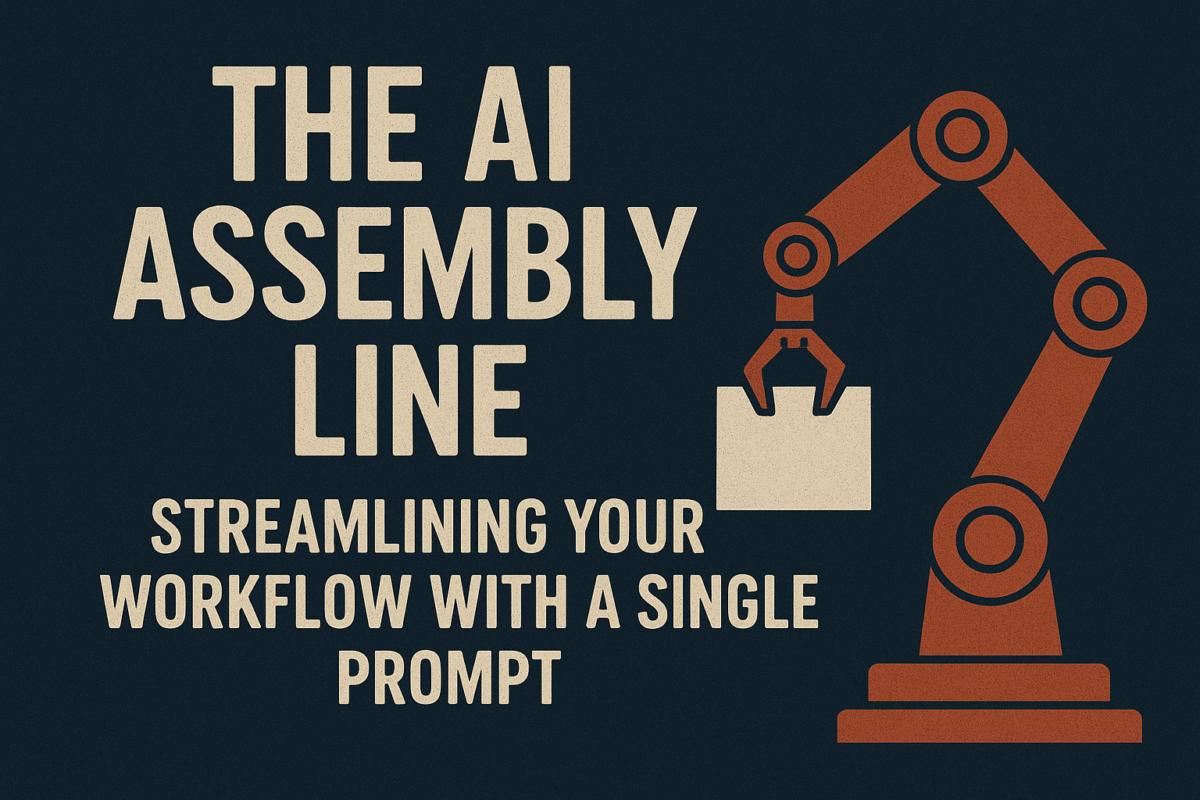In the rapidly evolving landscape of artificial intelligence, efficiency is the ultimate currency. While many users interact with large language models (LLMs) through a series of disconnected, single-step prompts, a more powerful and less-utilized technique is emerging: the AI Assembly Line. By crafting a comprehensive, multi-stage prompt at the beginning of a conversation, users can transform their AI chat into a sophisticated, automated workflow, significantly streamlining complex tasks like document review and content creation.
The Power of the Initial Directive
The core concept of the AI Assembly Line is to front-load the entire process into a single, detailed instruction. Instead of prompting the AI to “Summarize this document,” then “Check the facts,” and finally “Proofread the result,” a single initial prompt directs the model through all three stages sequentially. This approach leverages the AI’s contextual memory, ensuring that each subsequent task builds directly upon the output of the previous one, minimizing errors and maximizing coherence [1].This method is particularly effective for tasks that require multiple passes or different modes of analysis on the same piece of content. For instance, a single document might need to be analyzed for its core arguments, cross-referenced against external data, and then polished for publication. Breaking this down into separate chats or prompts introduces friction and risks losing the context established in earlier steps. A well-designed assembly line prompt, however, maintains a continuous chain of operations.
Key Components of an Effective Assembly Line Prompt
To successfully implement an AI Assembly Line, the initial prompt must clearly define three critical elements:1.The Input and Goal: Clearly state the source material (e.g., “Analyze the following draft article…”) and the final desired outcome (e.g., “…to prepare it for immediate publication.”).
2.The Sequential Stages: Define the exact steps the AI must take, in order. Use numbered lists or clear headings to delineate each stage. This is the “assembly line” blueprint.
3.The Output Format: Specify how the final result should be presented, including any required formatting, length constraints, or inclusion of citations.
Example: The Three-Stage Document Refinement Assembly Line
Consider a scenario where a user has a draft article and needs it to be fact-checked, revised for clarity, and then proofread. Instead of three separate interactions, the entire process can be initiated with one prompt:Initial Prompt:”You are an editorial assistant tasked with refining the following draft article for publication. Process the text through three distinct, sequential stages. Do not proceed to the next stage until the current one is complete.
Stage 1: Fact-Checking and Verification.Read the entire article. For every factual claim, statistic, or quote, use your internal knowledge base or search capabilities to verify its accuracy. If a claim is incorrect or outdated, replace it with the correct information and include a brief note explaining the change. If a claim cannot be verified, flag it with [UNVERIFIED] and leave it as is.
Stage 2: Clarity and Tone Revision.Take the output from Stage 1. Revise the text to improve flow, sentence structure, and overall clarity. Ensure the tone is professional and objective. Combine any overly short, choppy sentences and break up any run-on sentences.
Stage 3: Final Proofreading.Take the output from Stage 2. Perform a final, meticulous proofread for all typographical errors, grammatical mistakes, and punctuation issues. Ensure all citations are consistently formatted.
Present only the final, fully revised text as your output.[INSERT DRAFT ARTICLE TEXT HERE]”This single prompt establishes a clear, multi-step process. The AI is instructed to act as a specialized agent (“editorial assistant”), given a specific set of sequential tasks, and told precisely how to handle ambiguities ([UNVERIFIED]). The result is a single, polished output that has undergone three layers of scrutiny, all from one initial command.
Beyond Simple TasksThe AI Assembly Line is not limited to simple text processing. It can be adapted for complex data analysis, code review, or even creative brainstorming. For example, a prompt could instruct the AI to: 1) Analyze a dataset for outliers, 2) Generate three hypotheses based on the clean data, and 3) Write a summary paragraph for each hypothesis.By adopting this structured, assembly-line approach, users move beyond basic interaction and begin to harness the true potential of AI as a powerful, multi-stage processing engine, turning a series of manual steps into a single, automated workflow.
References
[1] NAITIVE. (2024). Mastering Complex Tasks: The Art of Prompt Chaining. Retrieved from https://medium.com/@NAITIVE/mastering-complex-tasks-the-art-of-prompt-chaining-97edc4594757
